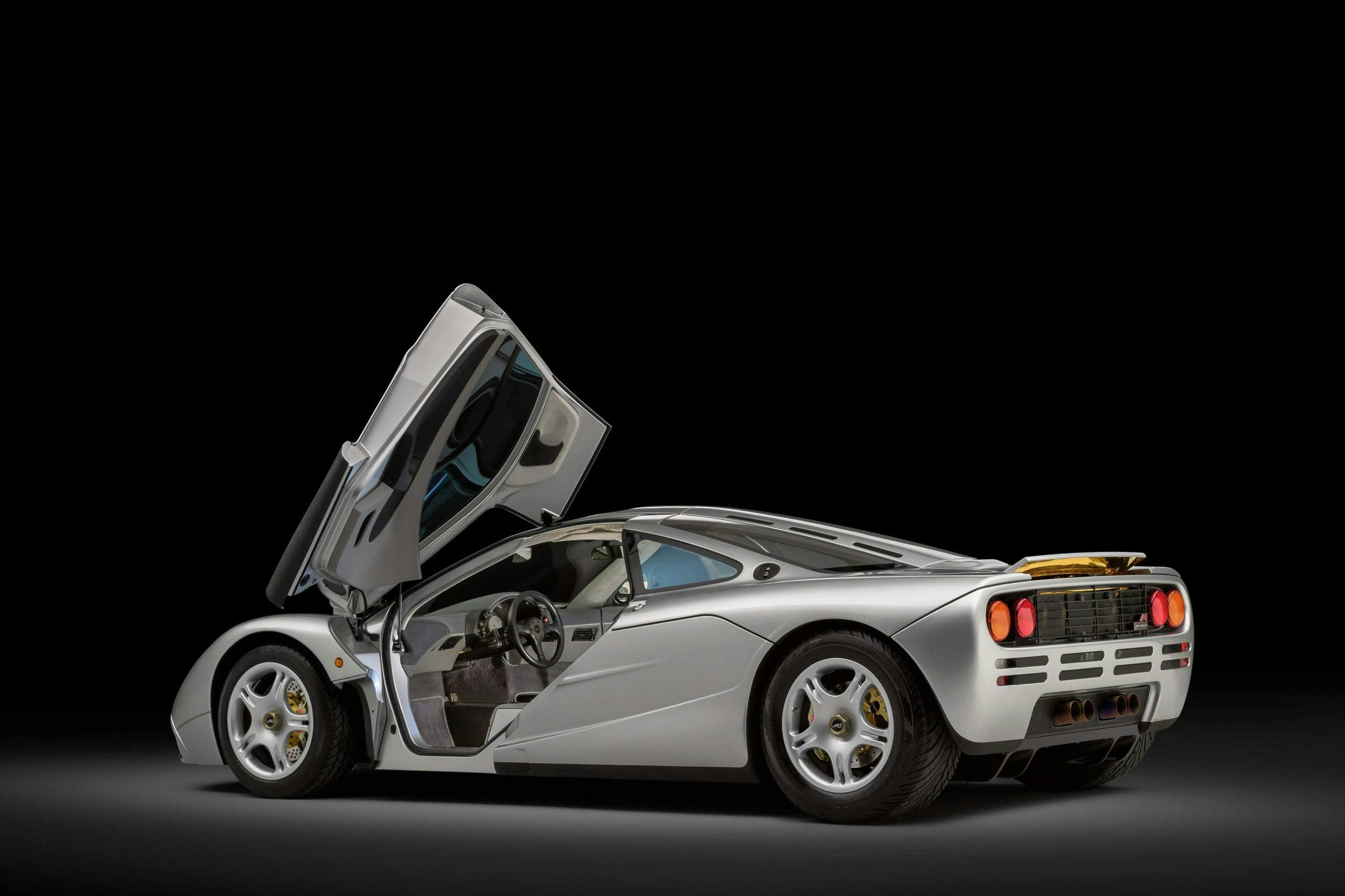Modern supercars owe a lot to this little Toyota
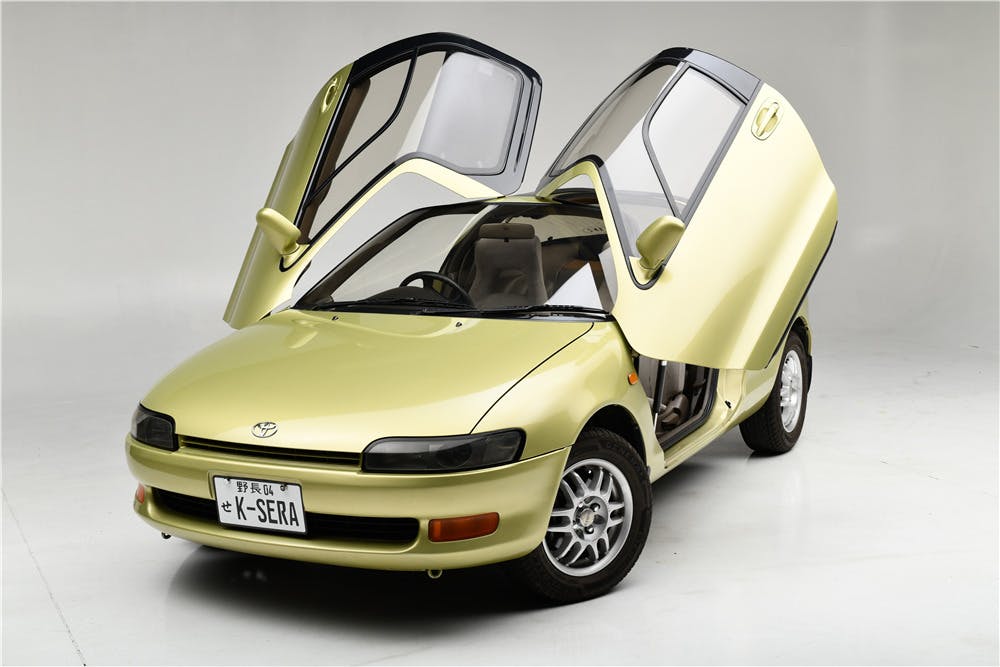
Remember the ’90s? Pauly Shore was surfing middle America, 401k portfolios were diverted to Beanie Baby futures, and the world’s most risk-averse automaker built an economy car with butterfly doors.
When you stop and think about it, however, the Sera isn’t as crazy as it looks on the surface. Butterfly doors are an ingenious solution to the density of Japanese cities, where parking is a nightmare. When fully open, the Sera’s doors require only 17 inches of lateral clearance, allowing it to fit into Kei car-sized parking spots. Although they look exotic, butterfly doors are in this case a practical consideration. In other words, very Toyota.
From 1990 to 1995, just under 16,000 Toyota Seras were built for the Japanese domestic market, but a handful were shipped to the (also right-hand-drive) United Kingdom market. It may not surprise you to learn that a Sera was serendipitously parked near Gordan Murray’s workshop while he was designing the McLaren F1. “I drove past it everyday,” he recalled in an interview with CAR magazine in 2012. Due to the F1’s central driving position, a conventional door wouldn’t work, as a portion of the roof would need to be removed. “Eventually we borrowed a Sera and the design started from there,” Murray explained. This strategy proved a success, and butterfly doors today remain an indisputable signifier of an exotic car.
Sera, pronounced like Doris Day’s “Que Sera Sera,” is a French-derived phrase meaning “whatever will be, will be.” It’s almost like Toyota knew the design was bound to catch on.
Although its look influenced the F1, the Toyota Sera was not the first road car to hinge its doors at the top-center of the windshield and bottom of the A-pillar. That honor goes to the 1968 Alfa Romeo 33 Stradale, one of the world’s first supercars, of which only 18 were made. As practically every other butterfly-doored car was built in limited numbers, it’s reasonable to conclude that the Sera was the first mass-produced car with this design feature (and surely the most mundane).

Stare at the Sera for a few minutes and it will become apparent what makes this car’s design so unique: Toyota managed to integrate several uncommon styling elements into a car that looks ultimately normal, at least in ’90s Japanese terms. The greenhouse is larger than just about any car on the road. The long windshield meets the roof/door windows with only a few inches of metal separating them. The rear hatch is a single piece of glass sweeping across the entire rear third of the cockpit without the assistance of a supporting frame. Aside from the massive B-pillar, which provides the only real structure to the roof, the entire cockpit is surrounded by glass. Six separate, oddly-shaped pieces of glass make up the greenhouse. The Toyota Sera is not the car to take into a hail storm.
Since the Sera is basically George Jetson’s (or for our younger readers, Rick and Morty’s) spaceship, the sun’s rays are a big factor. To help combat the greenhouse heat effect, Toyota made air-conditioning standard and included two removable interior roof panels for the upper door glass.
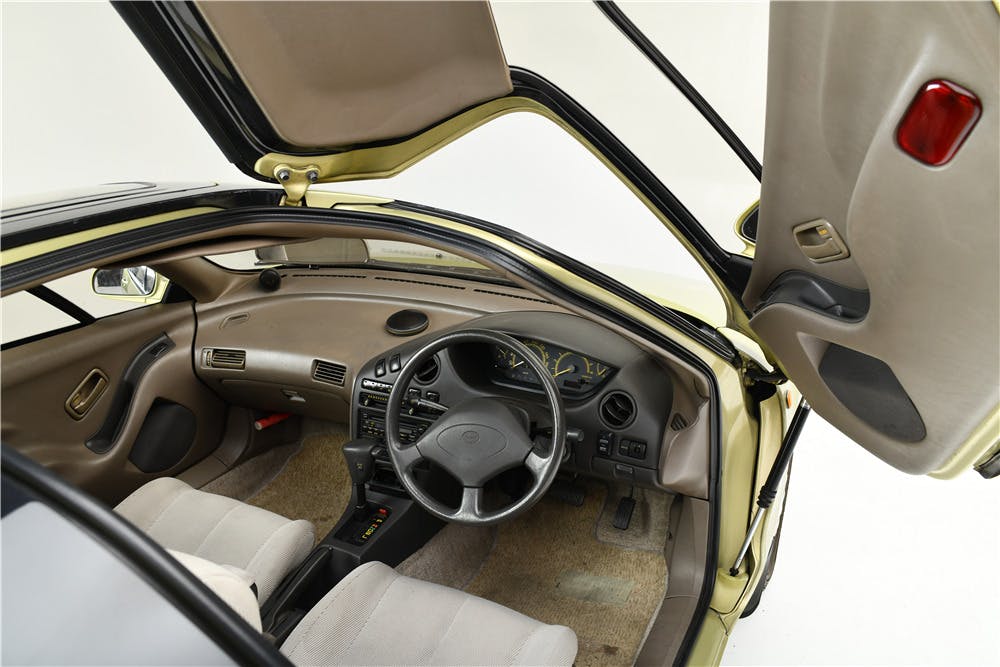
Like the Bricklin SV-1 or BMW Z1, the weird doors are a major source of interest, especially on North American shores where the Sera was never sold. That’s not to say, of course. there aren’t more curious bits to maintain an audience at a cars and coffee meet. The Sera is packed with obscure ’90s technology, much of which didn’t trickle down to lesser JDM Toyotas. For the young workaholics, a car-phone/fax machine could be installed from factory. Since pine-tree air fresheners are too pedestrian, Toyota offered two optional air filtration/fragrance systems. The “CleanAce” unit is a standalone roof-mounted air filter and interior light that was probably designed with smokers in mind. The more advanced “Air Fantasy” system, mounted in the center console, pumps small bursts of scented air through the HVAC ducts. Drivers could stock their “Air Fantasy” with any three of the following replaceable scent packs: Deodorizer, Morning Green, Peppermint, White Herb, and Sazan Floral. Good luck finding any of these on eBay.
By far the most desirable Sera option was the Super-Live Sound System (SLSS), comprised of 10 speakers and including an “Acoustic Resonance Woofer” in the trunk. The pièce de résistance? An enormous tube-shaped “Multi Reflection Speaker” mounted on the rear parcel shelf. If you need that Spin Doctors track to hit just right, push a button and set the SSLS to “Funky” mode which rotates the Multi Reflection Speaker to bounce sound off the rear window. A complete and functional SLSS system is the most sought after option for a Sera enthusiast, as they are very difficult to properly retro-fit.

The Sera is one of the few instances Toyota really let loose and had fun with a mainstream-market car. To best showcase the outrageous design, Toyota offered the Sera in every color of the metallic-beige rainbow, although its signature color is Greenish Yellow Mica Metallic.
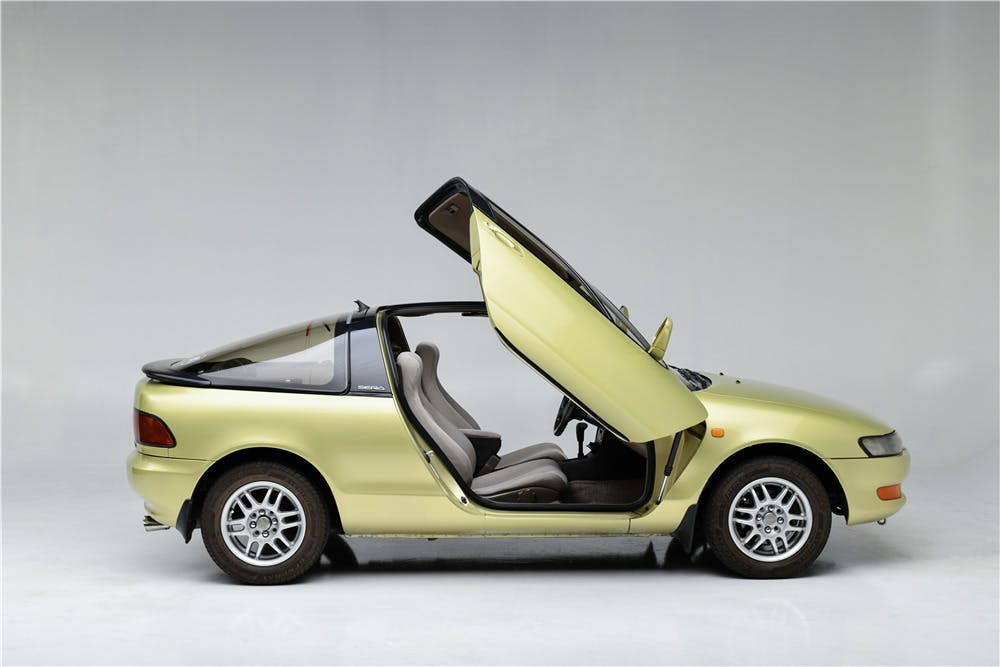
Though the Sera was marketed as an alternative to the MR2, the true driving enthusiast will pick the Midship Runabout. The Sera’s performance bona fides were respectable—really nothing to write home about, but I will anyway. The 1.5-liter inline-four made 104 horsepower and 97 lb-ft of torque and was shared with the Paseo. Weighing just 2050 pounds, the Sera had a power-to-weight ratio lower than a contemporary Miata. It wasn’t fast, but there was an optional five-speed manual, which is nice. Much of the drivetrain and suspension was also borrowed from the Paseo, which is not exactly a corner-carver.
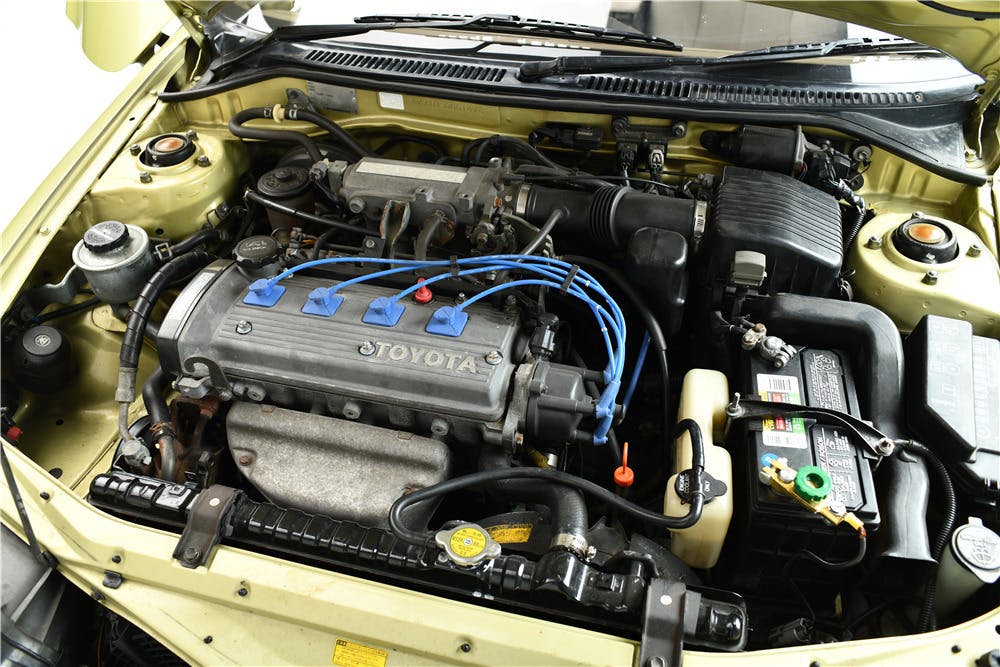
At the end of this year, the entire production run of Toyota Seras will be legal for import. A good Sera can be picked up for under $10,000, but rare options drive value. This one sold particularly well last year at Barrett-Jackson, mostly due to its signature “Greenish Yellow Mica Metallic” paint and functioning SLSS, parking sensors, and rain-sensing windshield wipers.
The oddity and parlor tricks make the Sera a fun conversation piece, but at the end of the day, what’s most fascinating is that Toyota went all the way with such a fun-loving economy car. Just imagine if Toyota had based the Sera on the 222-horsepower Celica ST185 GT-Four—now that would have been funky.
